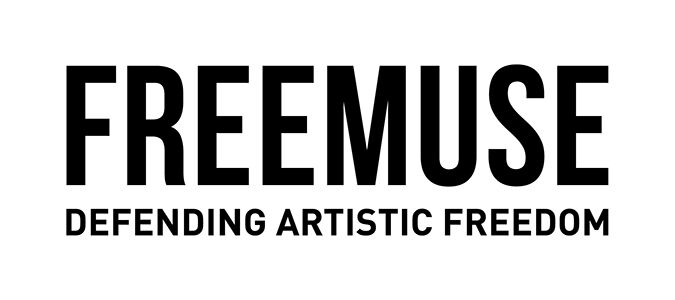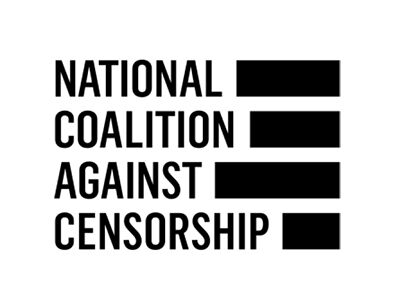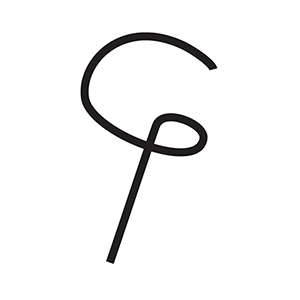Image: Christina Freeman, UltraViolet Archive, 2018 in Queens International 2018: Volumes Photo: Hai Zhang
Artistic Freedom + Expanded Notions of Censorship
Editor's Statement
As a nomadic research and event space, UltraViolet Archive provides visibility for and access to challenged creative works. Named after the wavelengths of light outside the visible spectrum, the material featured within this archive has faced the threat of public invisibility, due to banning, cultural amnesia, bias, self-censorship, and other challenges.
For Queens International: Volumes (2018-2019), the participatory installation features items on loan from the Queens Library relating to the censorship history of New York. Items in the installation will continue to be available to the public at the Queens Library following the exhibition. By featuring visual arts, literature, films, graphic novels, music and performing arts, the installation highlights that no medium is immune to censorship.
Over the past 6 months, as a Culture Push Associated Artist, I have expanded the scope of the UltraViolet Archive, conducting a series of interviews with experts to further understand limitations to artistic freedom in the United States.
Wanting to better understand legal definitions and precedents, as well as standards based on international law, I was curious about several basic questions: What is artistic freedom? What does it mean to be censored? Who can censor whom? Do you need to have structural power to censor? What are the boundaries around that? No one wants to think of themselves as a censor. . . but when is censorship appropriate and necessary?
I used this issue of PUSH/PULL as a platform for this investigation, conducting interviews with Srirak Plipat (Executive Director of Freemuse), Svetlana Mintcheva (Director of Programs at the National Coalition Against Censorship), and Dread Scott (an internationally-recognized artist whose works have faced content-related censorship).
In the interviews we discuss a range of events, covering a time period that extends from the 1980s into the present day, with points of view ranging from the international NGO perspective on cultural appropriation in the U.S., relocating oppressive monuments, definitions of hate speech, social media censorship, and economic limitations to visual artists in the United States.
This project was supported by Culture Push, Freemuse, Danish Arts Foundation, NCAC and Queens Museum Assistant Curator, Sophia Marisa Lucas. Transcription support from Aroob Khan. Design advice from Tim Laun. Life support and emotional labor from Brian George.
Many thanks to Clarinda, Keke, Shawn, and Kat at Culture Push, along with all who have participated in this endeavor. Special thanks to Sophia Marisa Lucas and Baseera Khan, curators of QI: 2018 for giving this project its first home.
- Christina Freeman, UltraViolet Archive
CONTRIBUTORS//
Dr Srirak Plipat is the Executive Director of Freemuse, where he works with local and international partners to devise a comprehensive approach to defending artistic freedom and cultural expression through research, advocacy and policy influencing. Plipat was Director at Amnesty International (AI) in London, managing operations and regional projects in over 15 countries in Europe, Africa and Asia. Before joining AI, Srirak was a documentary film producer and writer with the debut “One More to Freedom” series broadcasted on TV5 Thailand. He holds a PhD in Public and International Affairs from the University of Pittsburgh.
Svetlana Mintcheva is Director of Programs at the National Coalition Against Censorship (NCAC) and the founder of NCAC's Arts Advocacy Project. Mintcheva co-edited Censoring Culture: Contemporary Threats to Free Expression (2006, The New Press) and has written and spoken widely on issues of artistic freedom. She has taught literature and critical theory at the University of Sofia, Bulgaria, and at Duke University, from which she received her Ph.D. in critical theory in 1999. She has also taught part-time at New York University. Our conversation focuses on economic influences on artistic freedom.
Dread Scott is an internationally-recognized artist based in Brooklyn who makes revolutionary art to propel history forward. In 1989, his art became the center of national controversy over its transgressive use of the American flag, while he was a student at the School of the Art Institute of Chicago. President G.H.W. Bush called his art “disgraceful” and the entire US Senate denounced and outlawed this work. Dread became part of a landmark Supreme Court case when he and others defied the new law by burning flags on the steps of the U.S. Capitol. His work has been exhibited at the Whitney Museum of American Art, MoMA PS1, the Walker Art Center, Brooklyn Museum, Jack Shainman Gallery, NY, and Gallery MOMO in Cape Town, South Africa among others. His work has been featured on the cover of Artforum and the front page of NYTimes.com. His work is currently on view at James Cohan gallery through February 23, 2019 and the Brooklyn Museum through March 31, 2019.
EDITOR //
Christina Freeman is an interdisciplinary artist based in New York City. Her work takes on various forms including photography, video, artists’ books, multimedia installation, participatory performance, and curatorial projects. Whether initiating spontaneous conversation with viewers in public space, or working with an anthropologist or another artist, her practice has a porousness that relies on the participation of others. Creating unconventional rituals, she invites the audience to join in disrupting dominant cultural norms. Intervening in systems often taken for granted, she approaches culture as something we actively shape together. Community-building through transformative conversation motivates all of her work, regardless of whether she is performing, curating, or teaching. Freeman received her MFA in Studio Art from Hunter College, City University of New York in 2012 and her BA in Spanish and Latin American Studies from Haverford College in 2005.
Freeman’s projects have been featured in Artforum, Vulture, Hyperallergic, Art F City, Frieze, Observer, and Greenpointers. She has also been interviewed on Bulgarian National Television and Radio. Freeman has taught in the Department of Fine Arts at Haverford College and the Department of Art & Art History at Hunter College since 2014.
ISSUE Seven //
16 february 2019
Dread Scott// Testing the Limits of The First Amendment
Svetlana Mintcheva // The Economics of Artistic Freedom
Srirak Plipat // Censorship in the US: A Global Perspective
This issue of PUSH/PULL was supported by:






